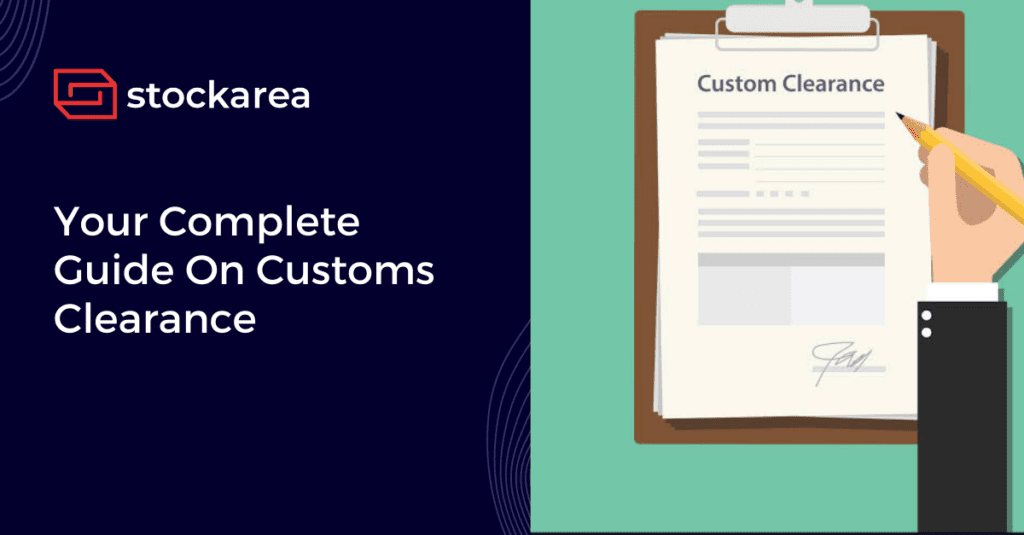Customs clearance procedures entail the preparation and submission of documentation necessary to facilitate exports or imports into the country, identifying the owner during customs scrutiny, evaluation, payment of duty, and receiving cargo from the customs department.
Customs clearance is a crucial step in the process of allowing goods to enter a country via an authorized customs broker. This procedure includes information about shipments including imports and exports, as well as parties participating in the process. All international ocean freight shipments, whether import or export, must adhere to each country’s customs clearance requirements. This process includes declaring certain information on the shipment being imported or exported and the parties involved.
Customs Clearance Process
Customs clearance is the process of taking items through the customs authorities in order to allow the flow of cargo into and out of a country. It is a process confirming that all tariffs have been paid and the shipper’s goods have been cleared for import/export. The following is a step-by-step approach for Customs Clearance.
1. Paperwork Verification
A customs officer checks that the paperwork for shipments is complete and accurate. Commercial invoices are required for international shipping. Once the paperwork is validated, the document will include a shipper and the receiver’s contact information. Additionally, the cargo will have the date and airway bill number.
2. Cargo Validation
A customs officer will validate the cargo and the applicable fees for a consignment depending on the nature of the commodities, their worth, and the laws enforced by the importing country. If the value of the items exceeds a specified tax bracket, the officer will verify that all applicable taxes and charges have been paid.
3. Duty Payment
The customs broker will guarantee that the relevant taxes and duties are pre-paid or collected based on the type of items in the shipment, their declared value, and the importing country’s customs legislation. Customs officers are responsible for verifying and tracking the payment of these charges. If there are any unpaid taxes or duties, customs will request payment. There are two modes of payment available: DDU (Delivery Duty Unpaid) and DDP (Delivery Duty Paid)
4. Release of Shipment
Once any outstanding taxes and duties are paid, customs releases the shipment and allows it to proceed to its final destination. Certain companies operate warehouses that allow a consignment to proceed past the border while being kept ‘in bond’ at the warehouse until cleared. Generally, there is a fee connected when not having the required documents on hand to legally clear a shipment.
When is Customs Clearance needed?
Customs clearance is essential for all overseas shipments of commercial items and is required for each cargo traveling from one overseas destination to another. All packages entering one country from another country are required to pass through the customs clearance process. Each country has its own set of legislation, which shipping companies and freight forwarders should be aware of and monitor in order to avoid missing any required documents during international trade. The process becomes quite simple if you have the necessary papers and work with a broker to arrange, calculate, and pay the relevant taxes and charges.
One of the simplest methods to streamline customs procedures is to partner with a customs broker who can process tax and duty payments in advance in exchange for a fixed customs clearance fee. A customs broker is an intermediary for importers who assists them with their customs transactions. A customs broker is either an individual or a business that is licensed to handle customs entry and duty payments.
Documents required for Customs Clearance
The documentation necessary for customs clearance is typically determined by the nature of the items being sent. Additionally, it varies according to the country of origin and destination of the goods. However, as a general rule, most enterprises must comply with a set of general paperwork when importing or exporting commodities.
1. Commercial Invoice
This attests to the parties’ trading activity. The commercial invoice must include the fiscal information of both parties, a description of the cargo, the Incoterm under which the transaction is taking place, and the value of the shipment.
2. Packing list
The seller generates the packing list, which is included with the business invoice. It should provide details about the merchandise (number and type of packages, weights, volume, etc.)
3. Bill of Lading
The transport business issues the Bill of Lading, or B/L. It attests that the products have been put onto the mode of conveyance. This document must be presented to the customs official in its original form.
FAQs
Generally, customs clearance takes less than 24 hours; nevertheless, there are situations when products are inspected for several days or weeks.
Customs clearance is required for all commercial goods that are exported or imported. The procedure is required to ensure that no illicit or restricted goods enter a country and that the government collects taxes and duties on respective commodities.
The customs agent is the party responsible for customs clearance within the international transportation chain. The customs agent acts as an intermediary between the importer or exporter and the customs administration.
Related posts
- What is Logistics?
- The Ultimate Guide On Third-Party Logistics (3PL)
- What is Freight Forwarding?
- Advantages and Disadvantages Of Ocean Freight Shipping
- Advantages and Disadvantages of Air Freight Shipping
- Air Freight Vs Ocean Shipping: Which Is Best For Your Cargo?
- Everything You Need To Know About FTL Shipping
- What Is Transportation Management System?
- 10 Key Benefits Of Transportation Management System (TMS)
- Logistics Market In India
- 10 Biggest Challenges Faced By Logistics Companies
- 6 Common Types Of Bill Of Lading (BOL)
- Business Intelligence Solution for Intralogistics
